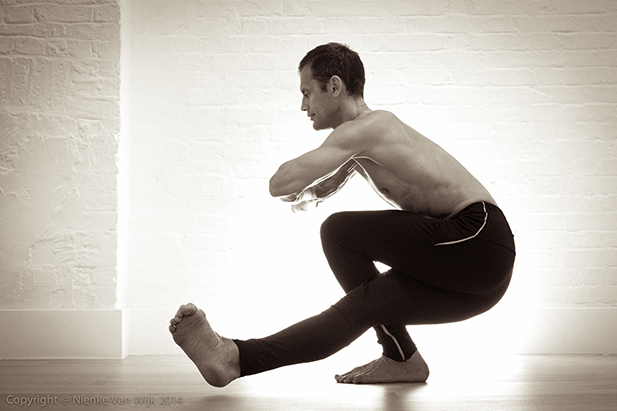Shadow Yoga
“Hatha yoga is a system of self-cultivation by which the individual frees himself from the burden of the world and its bondage. This cannot be achieved through superficial work. One must begin at the root and grow slowly, grow with patience and grow through persistence. Boredom is overcome by paying keen attention to the activity.”
Shadow Yoga Chaya Yoga
By Sundernath (Shandor Remete) Copyright © 2006
The school of Shadow Yoga is distinctive in its use of preparatory groundwork, in the form of dynamic sequences, or “preludes”. Beginners will appreciate shadow yoga’s straight forward effectiveness in breaking down tension in the body whilst building stamina, and how through the use of focused breath work, it helps calm the mind, leaving it in a restful state. The preludes particularly build leg strength and openness in the hips, firmness in ones ‘centre’, and stability in the spine. They also develop the rhythm and focused awareness necessary to free the mind from its habitual grip on the body. This breaks down both mental and physical tension and restrictions, so that one may move unhindered into the practice of asana. The preludes involve a lot of turning and nonlinear movements, and amongst the more familiar yoga postures, the casual observer might discern elements of the martial arts.
Such elements are used for their power in producing specific results in the physical and/or energetic body. The more experienced practitioner will appreciate the extensive use, and development of uddiyana banda, whilst learning how to apply knowledge of the marmas (vital points).
They will refine their breath, develop concentration and build greater awareness of the body’s subtle forces. It is through this internal work that one finds a greater depth to the practice of asana.
- Balakrama stepping to strength is the first form, and the one recommended for beginners and students coming from other schools of yoga. The Balakrama builds strength and stamina, conditioning the body for the following preludes, and introductory asana work. It builds a firm centre (core), develops a sense of rhythm and coordination of breath and movement, and teaches correct positioning through the application of marmasthana (the science of the vital junctions in the body).
- Chaya Yoddha Sancalanam yoking of the shadow warrior/Moving the shadow is the second form. This prelude deepens the work of the warrior and sun forms and refines the coordination of the body and breath. There are strong internal/external rotations of the legs which further break down restrictions in the hips, and more elaborate movements of the arms which release tensions in the shoulders. Ideally one should attain a level of proficiency in this grounding sequence before working on the third form.
- Kartikkeya Mandalam garland of light/circling the shadow is the third form. It uses more complex spiralling movements and seeks to circulate the vital energy in the body. This form is particularly suitable as a prelude to working with yoga-asana.
- Uddiyana Bandha (one of the internal locks) is introduced in the first form and developed over time. It ties the practitioner to their centre thus making it possible to release tension in the peripheral body. It creates space in the joints, and once it is mastered, directs energy into the spine. It is instrumental in developing an effective practice, harnessing and channelling vital energy and increasing the digestive fire, which in turn nurtures the blood and bone, builds a strong constitution and healthy immune system.
“I have studied with Tim for a few years now and I can honestly say that each class leaves me with more insights and understanding about my body and the practice. The workshops on the sinew channels are extremely informative and supportive for any practitioner wanting to deepen their knowledge and work with more subtle energies. Tim’s capacity to hold the space safely for new and regular students makes these workshops accessible to everyone”
– Sandrine Giacobino, Yoga teacher, London


